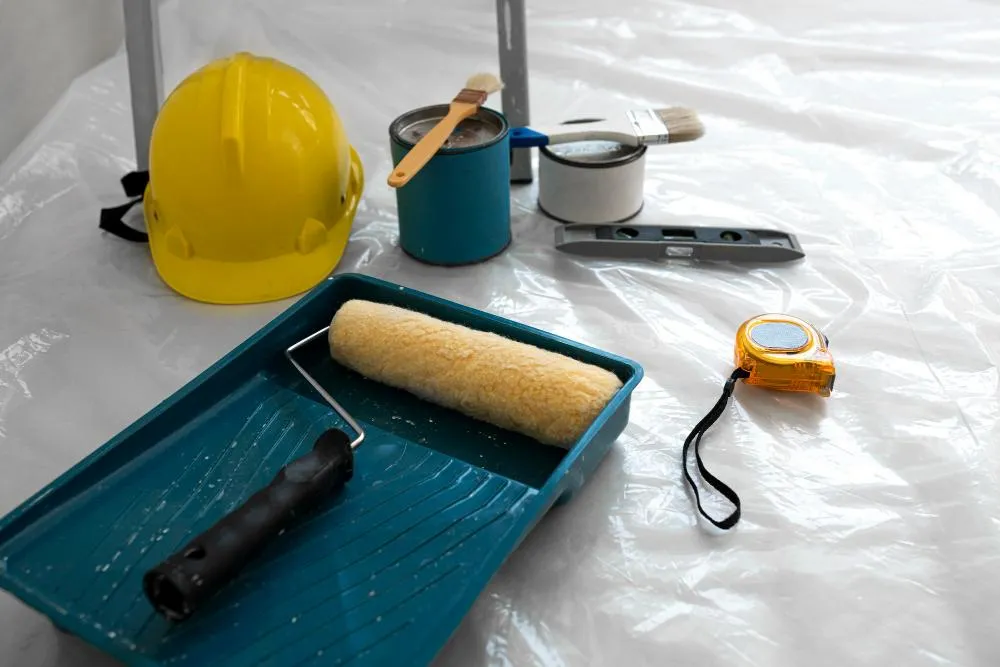
What’s the Difference Between Painting and Staining
Not Sure Which Finish Your Project Needs? Here’s the Breakdown
Whether you’re refreshing your deck, updating cabinets, or redoing exterior wood siding, you’ll likely face the question:
Should I paint it — or stain it?
At first glance, painting and staining might seem similar — both are finishes applied with brushes or sprayers, both come in a variety of colors, and both protect surfaces. But in reality, they’re quite different in how they look, wear, cost, and function.
In this guide, we break down the key differences between paint and stain so you can make the right call for your next project in Toms River, NJ.
Paint vs. Stain: A Quick Comparison Table
What Is Paint? And When Should You Use It?
Paint is a thick, pigmented coating that creates a solid, protective layer on top of a surface. It’s available in a wide range of sheens (matte, eggshell, satin, semi-gloss) and offers total coverage.
Best Uses for Paint:
Interior walls and ceilings
Exterior siding (wood, fiber cement, stucco)
Kitchen cabinets
Trim and doors
Metal railings and fences
Pros of Paint:
Wide variety of colors and finishes
Offers better UV protection
Hides surface imperfections
Lasts longer on vertical surfaces
Cons of Paint:
Hides natural wood grain
Requires sanding or stripping to remove
Can peel or crack if improperly applied
What Is Stain? And When Should You Use It?
Stain is a thinner, penetrating finish designed to soak into porous materials like wood or concrete. It comes in transparent, semi-transparent, or solid versions — each showing varying degrees of natural texture.
Best Uses for Stain:
Decks and railings
Fences and pergolas
Wood siding
Outdoor stairs or docks
Concrete patios or walkways (with stain additives)
Pros of Stain:
Shows off wood’s natural grain and character
Easier to apply and touch up
Less likely to peel or chip
Dries faster than paint
Cons of Stain:
Requires more frequent reapplication (especially in harsh climates)
Fewer color options
Offers less surface protection for high-traffic areas
FAQs: Painting vs. Staining in Toms River, NJ
Is stain better for decks than paint?
Yes. For decks, stain allows the wood to breathe and flex with the weather. Paint may crack or peel under foot traffic and moisture exposure.Can I paint over stain?
Yes — but you’ll need to sand the surface and apply a bonding primer first to ensure proper adhesion.Can I stain over paint?
No. Stain won’t penetrate painted surfaces. The paint must be fully stripped or sanded down before staining.Which lasts longer: paint or stain?
Paint generally lasts longer on vertical surfaces like siding. Stain may need to be reapplied every 2–4 years, especially on horizontal surfaces like decks.What’s better for cedar siding: paint or stain?
Stain is typically preferred for cedar because it allows the wood to “breathe,” preventing moisture buildup and warping.
Local Insight: What Works Best in Toms River?
In coastal areas like Toms River, your choice matters even more:
Exterior paint is ideal for siding exposed to sun and salt air, offering better UV protection.
Decks and fences benefit from breathable semi-transparent or solid stains that adapt to seasonal weather shifts.
Hiring a professional like A Point Painting & Remodeling ensures your materials are prepped properly and the right finish is chosen for long-term durability.
Still Not Sure? Let’s Talk.
The best way to choose between paint and stain is to evaluate your surface, goals, and environment.
Our recommendation:
For wood decks, fences, or railings: go with stain
For walls, cabinets, siding, or high-wear trim: paint is best
For outdoor projects near the Jersey Shore: talk to a local pro who knows what works
Get Expert Advice and a Free Quote
Need help choosing the right finish for your next project? Whether you’re repainting your home’s exterior or staining your deck, A Point Painting & Remodeling is here to help.
Call (732) 286-9886 or Request a Free Estimate